"Play is the highest form of research" Maan en Muis spelen sinds anderhalve week dagelijks met elkaar: Na de ochtendronde leven ze zich samen uit, waarna ze samen naar de weide lopen. In de loop van de dag zie ik ze regelmatig/steeds vaker ook op de wei of over de track rennen en spelen. Maan zoekt na zijn trainingen met mij -en vooral als die wat emotioneel of moeilijk was- direct steun bij Muis. Ze zoeken elkaar dan direct op om even te spelen en 'klungelen', waarna ik Maan nog dieper zie ontspannen en elke dag speelser zie worden in de kudde. Gisteren gebeurde er weer iets bijzonders (vind ik ): Maan bracht ik na het bekappen weer naar het land, waarna hij direct de paddock in stapte waar Gupsy en Ichi stonden te eten. Nu zorg ik er altijd voor dat paarden okee zijn voor ik ze terug de wei in breng, maar Maan heeft grote moeite met 100% en diepere ontspanning (waardoor hij hier in training is) en neemt toch een restje mee. Ichi (Paint merrie) is extreem gevoelig en merkt alle veranderingen op, dus ook als Maan nog wat onzeker/gespannen de paddock in komt. Haar reactie was pittig en duidelijk: ze wilde Maan niet in de buurt hebben. Gupsy zag het gebeuren en deed iets ongelooflijk lief en bijzonder: hij liep weg uit de paddock, de track op, om Muis te halen. Die stapte al naar Maan maar Gupsy spoorde aan tot draven tot ze elkaar gevonden hadden en sloot zich vervolgens weer aan bij Ichi in de paddock. Maan kon weer spelenderwijs afvloeien met Muis waarna ze ook de paddocks in liepen om te eten. De rust was weer teruggekeerd!
0 Comments
Weber's Law in Horsemanship Before I dedicated myself 100% to Horsemanship, I studied Marketing/Public Relations. It wasn’t necessarily my first choice, but I found it very interesting and since there were no proper studies about Horsemanship in The Netherlands, I chose something else entirely. Weber's Law is a big thing that research and Marketing companies use all the time, for instance when creating a new advertisement or campaign that we see on TV. 'Weber's law is the idea that the just noticeable difference (or JND) between two stimuli is a constant proportion of the intensity of the original stimulus'. Think about loud music or TV noise; it doesn't seem as loud if you've been in the room for a while, but it's loud for someone who just entered the room. The JND is sometimes called 'the difference treshold' since it's about the smallest stimuli that a person (or animal) will or can detect. In the World of Marketing this Law means gradually changing the ingredients of a product, or adding/reducing certain amounts or contents of a product. The change is so small, people don't notice the difference. In the World of Horsemanship, it gets slightly more complicated; horses aren't people, so Weber's Law applies a bit different to them. What we as humans wouldn't notice because the change is too insignificant, is what horses notice immediately. Our JND's are wired differently to observe and process things in different ways, depending on what's important to us and them. Body Language (Non-Verbal Communication) would probably be on top of the list: Where we humans foremost rely on our developed, spoken language, animals rely on their ability to read and express Non Verbal cues. Unless you practice this on a regular basis (like dancers do), non-verbal cues can be difficult to read or pick up on at first. To give you some insights, scroll down to read about 9 types of Non-Verbal Communication Types. What's a Type that you've mastered, or having difficulties with? What's a JND your horse immediately picks up? Maybe it's when you're wearing perfume (when you normally don't) or when you're feeling tense in your body? What's something your horse always notices? 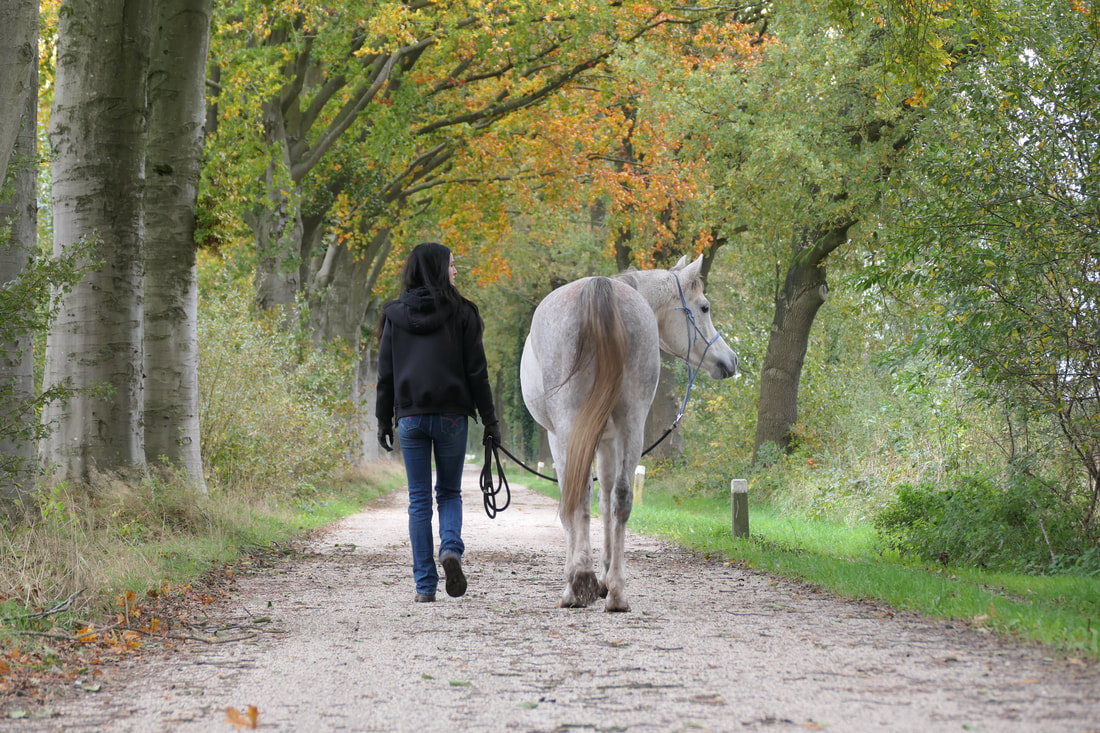 Love, Zoë van Mourik | Equine Trauma & Behavior Specialist www.zoevanmourik.com & www.houseofhorsemanship.nl Niet rijden ≠ Niets doen》Vervolg van '3 Jaar is Te Jong' De training van een (jong) paard bestaat uit veel grijze, werkbare gebieden. Het is dus niet een kwestie van wel/niet rijden, wel/niet belasten, wel/niet iets doen: tussen het radicale 'Wel of Niet' bevindt zich namelijk een hele wereld: Dit is het werkbare gebied waarin het fysieke en mentale jonge paard alles opslaat en verwerkt, om er vervolgens een leven lang last òf profijt van te hebben. En dat is iets waar wij als mens enorme invloed op hebben; een verantwoordelijkheid die niet iedereen neemt. 'De tijd gaan vanzelf voorbij' Wij mensen zwichten al snel door sociale- en tijdsdruk, waardoor beslissingen betreft onze paarden flink beïnvloed worden. Dit uit zich in de praktijk doorgaans in; A: Te vroeg beginnen met te zwaar belasten, al dan niet icm; B: Plotseling gaan belasten Flooding, staken, fysieke- of gedragsproblemen die zich (soms jaren) later ontwikkelen, zijn hier typische gevolgen van. Het is dus ontzettend nuttig om een jong paard alvast het een en ander bij te brengen, zodat je het niet alleen jezelf gemakkelijk maakt maar ook je dierenarts, hoefsmid, stalgenoten, etc. Mijn 'Kindergarten Training' bestaat doorgaans uit;
Deze oefeningen vertalen zich naar een paard dat zich gemakkelijk laat leiden, zich bewust is van jouw ruimte, niet snel schrikt/onder de indruk is en goed beslagen ten ijs kan gaan bij bezoeken van bijvoorbeeld de dierenarts en hoefsmid. Een fijne, positieve eerste ervaring legt voor een paard de basis voor vertrouwen in jou en onbekende situaties. Zo kun je zonder problemen uiteindelijk beginnen aan de verdere opleiding van je paard, zoals zadelmak maken. Alles begint bij een sterke basis! Tip: zelf op onderzoek uitgaan? Gebruik dan geen resultaten van Google, maar raadpleeg websites van bijvoorbeeld Universiteiten om bij de meest recente beschikbare informatie te komen. Pictures below: Kindergarten Training with Luke, an Arabian colt. This was at the beginning of our training, where I establish Communication, Leading and Handling. Running alongside me and stopping next to my shoulder is one of the exercises I always implement. Luke was happily surprised! He was afraid of people when he first arrived. He slowly started to come out of his shell, often by making these happy jumps. Instead of punishing him for just being a (young!!) horse, I encouraged him to be outgoing, happy and true to his emotions. This in turn resulted in fun training sessions and a very curious and well-balanced colt. A perfect baseline for a future riding horse! Love, Zoë van Mourik | Equine Trauma & Behavior Specialist www.zoevanmourik.com & www.houseofhorsemanship.nl Is Your Horse Aggressive? Or Are You Intimidated? *recent conversation turned into a blog* Horses are big (flight) animals, so it makes sense why people would be scared or at least intimidated by their presence alone. But being scared isn't the problem; not acknowledging it is! Because if we don't or can't admit and then control our own emotions, it becomes too easy to judge a horse and anthropomorphize their behavior. Two other important things to consider are; A: Horses are energy-conservers, being 'aggressive' or 'naughty' takes up a lot of energy! B: Aggression or Anger are secondary emotions, so when a horse is threatening to strike, bite or attack (and there are no physical ailments to be found!) you aren't dealing with 'bad behavior' but self-preservation. Blaming or punishing them for their behavior instead of holding space for their repressed emotions is one example of how these horses eventually do become aggressive. They have learned how to protect themselves and by then, humans have too often proved that that is in fact necessary. It's an undesirable but inevitable outcome of not dealing with the emotions of the horse, and the emotions we are keeping trapped inside ourselves. Do you hold space for emotions? For your horse(s), and for yourself? Are you able to correctly read what emotion goes behind the behavior? Love, Zoë van Mourik | Equine Trauma & Behavior Specialist www.zoevanmourik.com & www.houseofhorsemanship.nl
Monty Roberts; geen onbekende naam in de paardenwereld en een waar veel van ons mee zijn opgegroeid.
Termen als een round-pen werden (in Nederland) nieuw leven in geblazen en van een Join-Up hadden we destijds nooit gehoord, behalve misschien uit de Heartland boeken van Lauren Brooks. Desondanks stonden we met verbazing te kijken hoe deze man wilde/feral paarden in 1 sessie weer gewillig en kalm leek te krijgen en ze zelfs direct kon rijden. Hoe kies ik de juiste tools?
De meeste keuzes die ik maak wat betreft (ook) de tools waarmee ik werk, maak ik grotendeels gevoelsmatig.
Toen ik in 2017 aan het werk ging in Amerika en te maken kreeg met echt zwaar getraumatiseerde of wilde paarden, voelde meer druk/leverage/tools juist niet logisch voor mij. Dit soort paarden (en eigenlijk alle paarden) wil ik zo veel mogelijk vrijheid geven en zo min mogelijk opties om tegen te vechten. Een optie die de Dually Halters bemoeilijkt en in sommige gevallen zelfs in zijn geheel wegneemt. Maar ondanks mijn intuïtieve (en averechtse) reacties op bepaalde onderwerpen, ben ik altijd nieuwsgierig naar de wetenschappelijke onderbouwing. Dus toen in januari 2020 een wetenschappelijk onderzoek uitkwam met resultaten die precies dat onderstreepten en bevestigen wat ik gevoelsmatig al wist, ben ik alleen maar meer gaan luisteren naar mijn eigen gevoel. Het onderzoekDoor Dr David Marlin 27 januari 2020 "TRAINING HEADCOLLARS AND THEIR EFFECT ON HORSE BEHAVIOUR - OLIVIA TURNER" *** GUEST POST *** by Olivia Turner B.Sc Hons, Animal Behaviour Consultant & Equine Bitting Specialist Handling issues are very common in the horse world and there are many gadgets and training aids available which claim to fix the problem, but what effect do these have on equine emotional state and behaviour? The gadgets utilise pressure, the more pressure you apply, the more uncomfortable it becomes for the horse. The goal being that the pressure motivates the horse to perform the right behaviour, then the handler releases that pressure. This method of pressure and release is called negative reinforcement. A stimulus is removed to increase the performance of a behaviour, e.g. applying pressure on a headcollar (HC) for a horse to stop, then releasing the pressure the second the horse stops. The horse will learn on the release of that pressure, so if your timing isn’t accurate the horse will find it harder to learn what you intend it to. Techniques (such as pressure and release) are only deemed ethical if they are proportionate to the desired response, are predictable for the horse and are released immediately upon the correct response (McLean and McGreevy, 2010). The context of the situation is very important when we’re thinking about using aversive stimuli. In a fearful situation what we really want is for the horse to relax, listen and learn something positive about what’s frightening them. Applying increasing amounts of pressure that is magnified by a training HC might get the job done, but at what cost to the emotional welfare of your horse? If you’re frightened and someone puts pressure on you, what’s your first response and how does it make you feel? There is a level where pressure becomes a punisher and it’s something I see a lot of when watching people train in training HC’s. The horse doesn’t offer the right behaviour, so they ramp up the pressure very quickly or hold it for a longer duration. What they fail to notice are the early indicators given by the horse that it wasn’t coping in that situation. Now the pressure has been escalated and they’ve made the horse feel worse about what’s going on, rather than teaching it the desired response in a more ethical way. So, the horse might perform the desired behaviour, but is experiencing emotional conflict, stress and discomfort while doing so. For example: your horse is frightened of the trailer, forcing it on by increasing aversive pressure will eventually work. However, you haven’t made the experience positive or enjoyable. Your horse is ‘behaving’ as a result of active punishment and discomfort, not because it’s truly happy at walking onto the trailer. There are a number of training HC’s on the market, perhaps the most common is the Dually Headcollar, designed by Monty Roberts. This magnifies the pressure a handler can apply in a normal headcollar and concentrates it on the nose and subsequently will create some poll pressure. Research by Iijichi et al, 2018 looked at the effects on compliance, discomfort and stress in naïve horses trained with a Dually and a normal HC in 2 novel handling tests. Their results showed that the Dually didn’t increase compliance compared to a standard HC and it caused an increase in discomfort as measured by the Horse Grimace Scale (HGS). Other similar HC’s on the market are the Ezy Loader, the Eskadron Control Headcollar and the Be Nice Halter. All give the handler a mechanical advantage and apply escalating pressure to the horse. Research has already proven that high pressures on the nose and poll caused by tight bridles and nosebands increase stress, handler avoidance, tissue damage and head shyness (Doherty et al, 2016; Fenner et al, 2016; Hockenhull and Creighton, 2013 and McGreevy et al, 2012). All things we want to avoid when teaching horses to be safe and relaxed when being handled by us on the ground. It would be interesting to see what pressures on the facial tissues are actually being exerted by these HC’s and to assess the consequences on equine emotional state and welfare. Once we understand why a horse isn’t doing a behaviour that we want, we can see things from their perspective and know which area of training needs more practice. All horses are individuals and will respond differently to various training methods, just make sure your timing is correct and you’re rewarding your horse for the behaviours you want! TAKE HOME POINTS * Increasing aversive pressure will only increase discomfort, stress, fear and pain. You might get the behaviour you want, but your horse was in a negative emotional state and therefore won’t have made a positive memory at performing that behaviour. * Identify why your horse won’t do something and focus on re-training the behaviours needed to do it. * Aim to train your horse to respond to a light aid and proof that behavioural response by practising it in a variety of situations. * Make sure your timing is accurate and reward the ‘try’ if your horse is struggling. * Be predictable for your horse and make it easy for them to get the answer right. * If your horse is struggling with something scary like trailer loading, then be realistic with what they can manage in any one session. That competition you’ve got planned might need to wait! * Don’t rush anything, be relaxed and go at the pace your horse is comfortable with. * Interested in scoring equine facial expressions for yourself? Then download the HGS app: https://awin-project-hgs.en.aptoide.com/ References: Docherty, O., Casey, V., Arkins, S., 2016. An investigation into noseband tightness levels on competition horses. Journal of Veterinary Behaviour. 15,pp.78-95. Fenner, K., Yoon, S., White, P., Starling, M., McGreevy, P., 2016. The Effect of Noseband Tightening on Horses’ Behaviour, Eye Temperature, and Cardiac Responses. PLoS ONE. 1:5,pp. 1-20. Hockenhull, J. and Creighton, E., 2013. Training horses: Positive reinforcement, positive punishment, and ridden behaviour problems. Journal of Veterinary Behaviour. 8,pp. 245-252. Iijchi, C., Tunstall, S., Putt, E., Squibb, K., 2018. Dually Noted: The effects of a pressure headcollar on compliance, discomfort and stress in horses during handling. Applied Animal Behaviour Science. 205,pp.68-73. McGreevy, P., Warren-Smith, A., Gruisard, Y., 2012. The effect of double bridles and jaw-clamping crank nosebands on temperature of eyes and facial skin of horses. Journal of Veterinary Behaviour. 7, pp. 142-148. McLean, A., McGreevy, P., 2010. Ethical equitation: Capping the price horses pay for human glory. Journal of Veterinary Behaviour. 5,pp. 203-209. Paarden zelf geven dus ook de voorkeur aan een trainingshalster zonder hefboomwerking/leverage: "Their results showed that the Dually didn’t increase compliance compared to a standard HC and it caused an increase in discomfort as measured by the Horse Grimace Scale (HGS)." Touwhalsters, kaptomen en/of nylon/biothane halsters zijn fijnere en veilige tools om mee te werken en communiceren, doordat er geen hefboomwerking aanwezig is wanneer we de fysieke druk opvoeren. De zogenoemde 'consequentie' als het paard tegen de druk in beweegt, blijft dus uit. Zoals met meer tools het geval is zal de Dually in de juiste handen geen schade aanrichten; zolang deze niet ingezet wordt bij zwaar getraumatiseerde of wilde paarden want hun 3 Second Window is ontzettend klein! Dit betekent dat de quick release van -in dit geval- een Dually meer schade dan goeds aan kan richten, waardoor het fijner kan zijn jezelf bekend te maken met tools die te allen tijden toepasbaar zijn en op ieder individueel paard. Naast het feit dat ik het persoonlijk niet fijn/eerlijk vind om met extra/veel druk te werken, heeft werken op gevoel echt mijn voorkeur; en 'Feel can be taught, but not always learned'. Wat het dus moeilijker maakt om 'het juiste te doen' of om te bepalen wanneer een tool zich 'in de juiste handen begeeft'. Want wie beoordeeld en beantwoord deze vragen en situaties? En is dat wel objectief? Als je moeite hebt met het kiezen van de juiste/meest vriendelijke/eerlijke tools om mee te communiceren en werken, helpt het wellicht om aan te denken aan deze quote, die mij helpt om dingen in het juiste perspectief te (blijven) zien: "You will never have to force anything that is truly meant to be" "Increasing aversive pressure will only increase discomfort, stress, fear and pain. You might get the behaviour you want, but your horse was in a negative emotional state and therefore won’t have made a positive memory at performing that behaviour." Nog zo'n waardevolle zin uit bovenstaand onderzoek, die belicht waarom ik niet achter principes sta die gedrag 'shapen' of 'redirecten'; zo ontstaat inderdaad het gewenste gedrag, maar vanuit welke emotie stamt dit? Acceptatie, omdat het paard het samenwerken leuk vindt? Of irritatie en tolerantie, omdat het paard onder jouw druk uit probeert te komen en zich vanuit stress/angst/kwaadheid overgeeft? 'Volg het paard en niet de methode' is dus ook toepasbaar op de tools waarmee we werken en als we eerlijker en met een open mind durven kijken naar onze paarden, laten zij hun gevoel vaak al tijdig aan ons merken. De massa
Iets waar we bij het uitkiezen van tools misschien niet zo snel/lang bij stilstaan, maar zo belangrijk is; de massa van het object!
Persoonlijk geef ik bijvoorbeeld de voorkeur aan een lichtgewicht halster, zonder hardware, zonder leverage en van niet te zacht of hard materiaal. De Dually checkt dus alle punten aan die ik persoonlijk probeer te vermijden; een handige test om even te checken of de tools waar je voor gekozen hebt ook daadwerkelijk passen bij jou/jouw training. Een voorbeeld uit de praktijk, via een collega (vertaald); 'Ik heb mijn paard nu twee jaar, ze is bijna drie. Ik heb Monty's boek gekocht om haar te kunnen trainen en ik begon met een geknoopt touwhalster in plaats van de Dually. Inmiddels heb ik er 1 aangeschaft maar alleen het geluid van het hardware maakt haar zo nerveus, het duurt weer erg lang voor ik haar kan overtuigen dat het veilig is. Ze is nog jong en heel intelligent, ze volgt me overal en als ik haar touwhalster om wil doen komt ze naar me toe en stopt ze zelf haar neus door het halster!
Een voorbeeld van hoe een paard zelf dus aan kan geven zich wantrouwend te voelen tegenover een nieuwe situatie; in dit geval het introduceren van een nieuw trainingshalster. In de video hieronder zie je hoe Walter op een soortgelijke manier reageert op zijn kennismaking met een kaptoom. Let op hoe ik te werk ga wanneer Walter (vanuit wantrouwen) weg stapt.
|
Details
AuthorZoë van Mourik: Equine Trauma Specialist, Behaviorist Archives
June 2024
Categories
All
|
|
KvK
81860277 BTW NL003612667B82 IBAN NL75KNAB0416741983 |
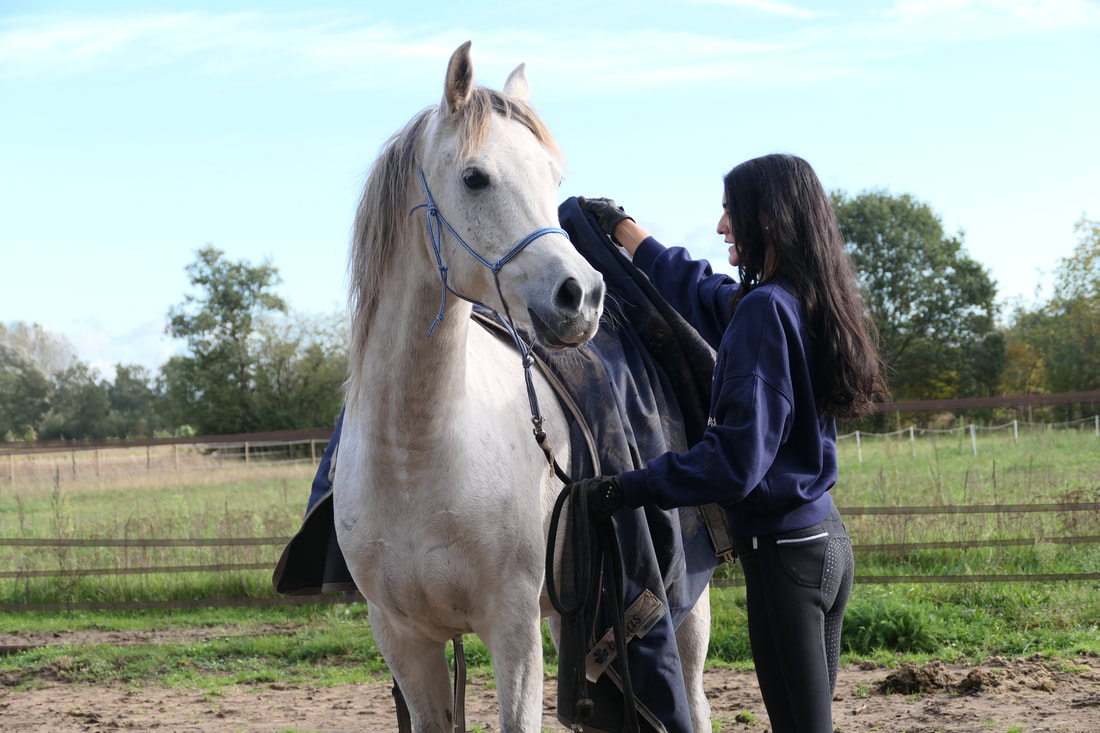
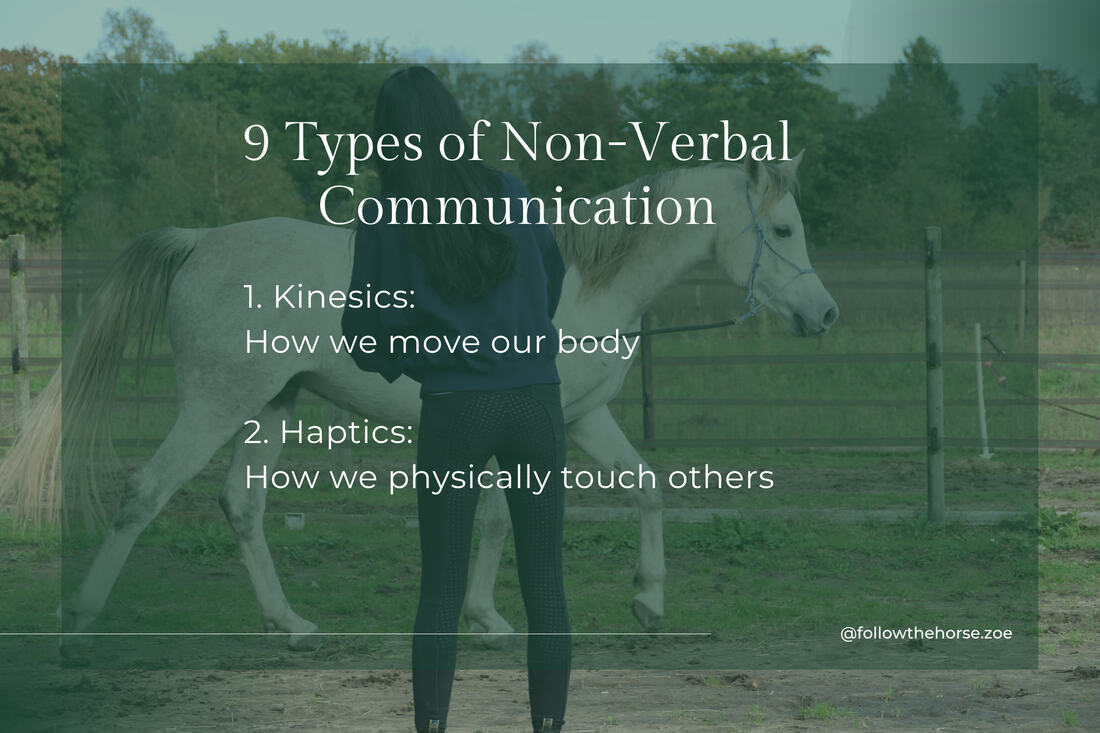
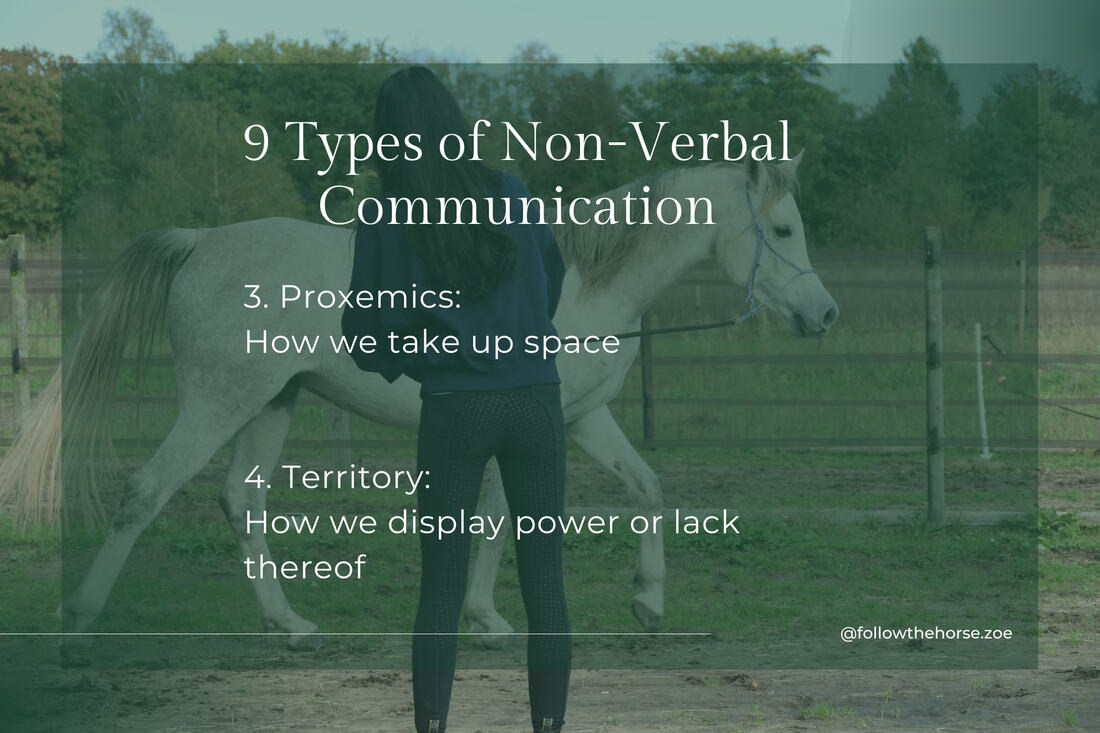
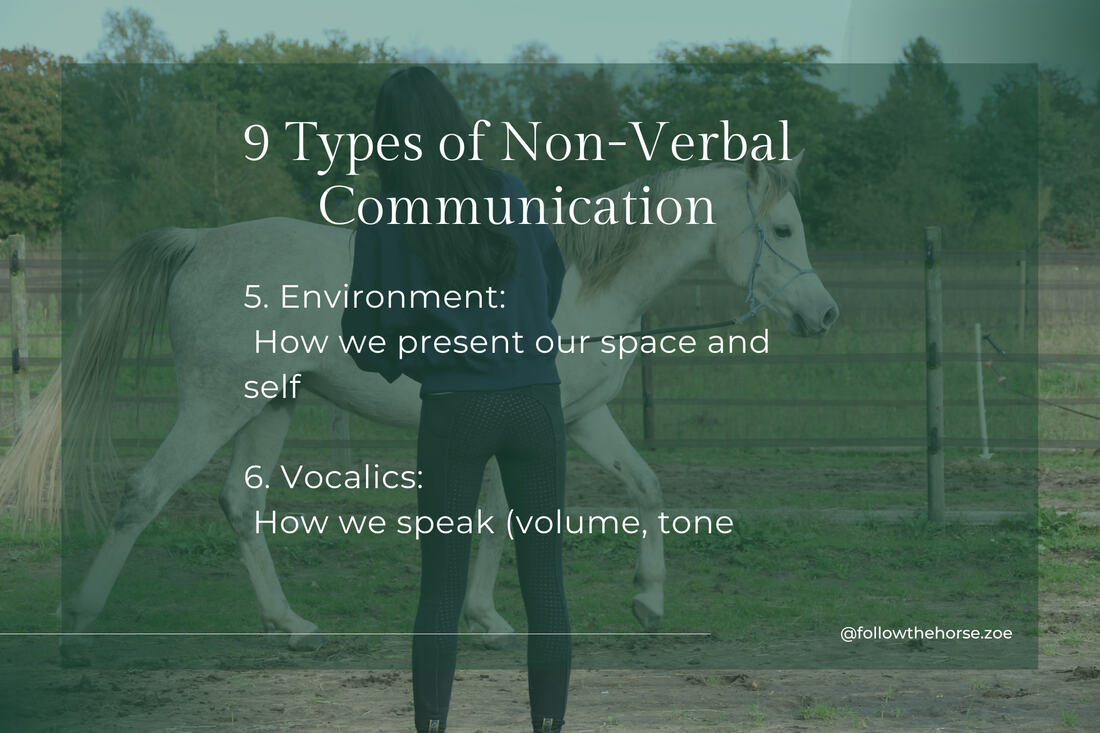
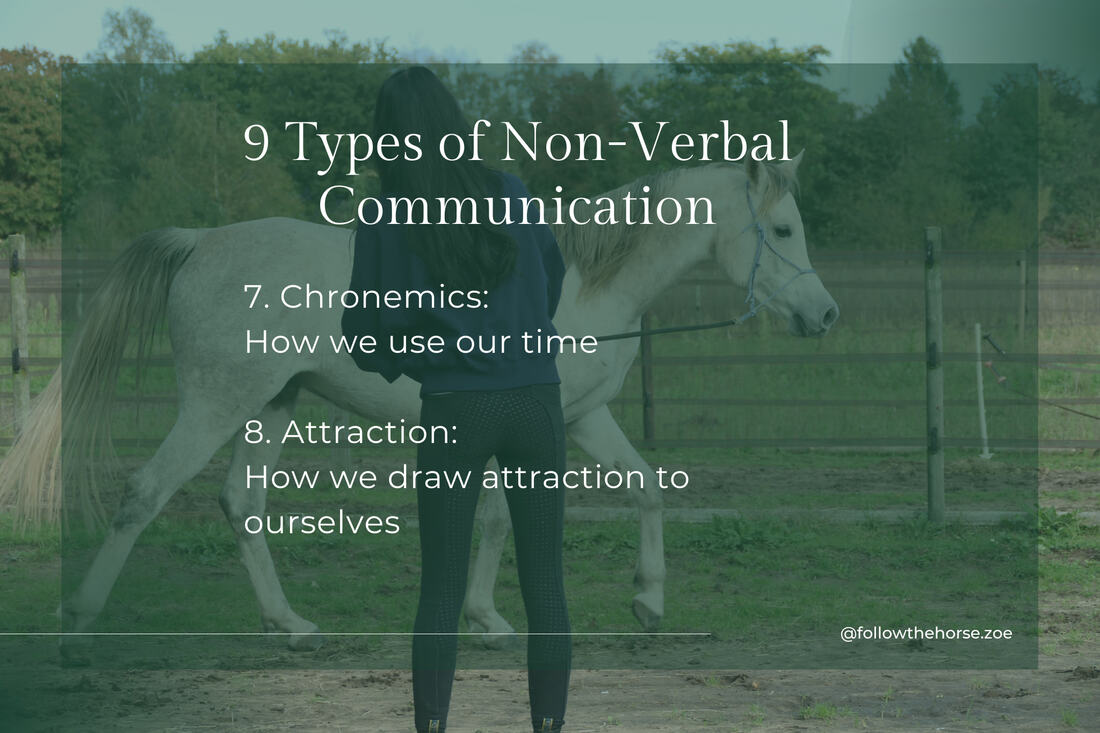
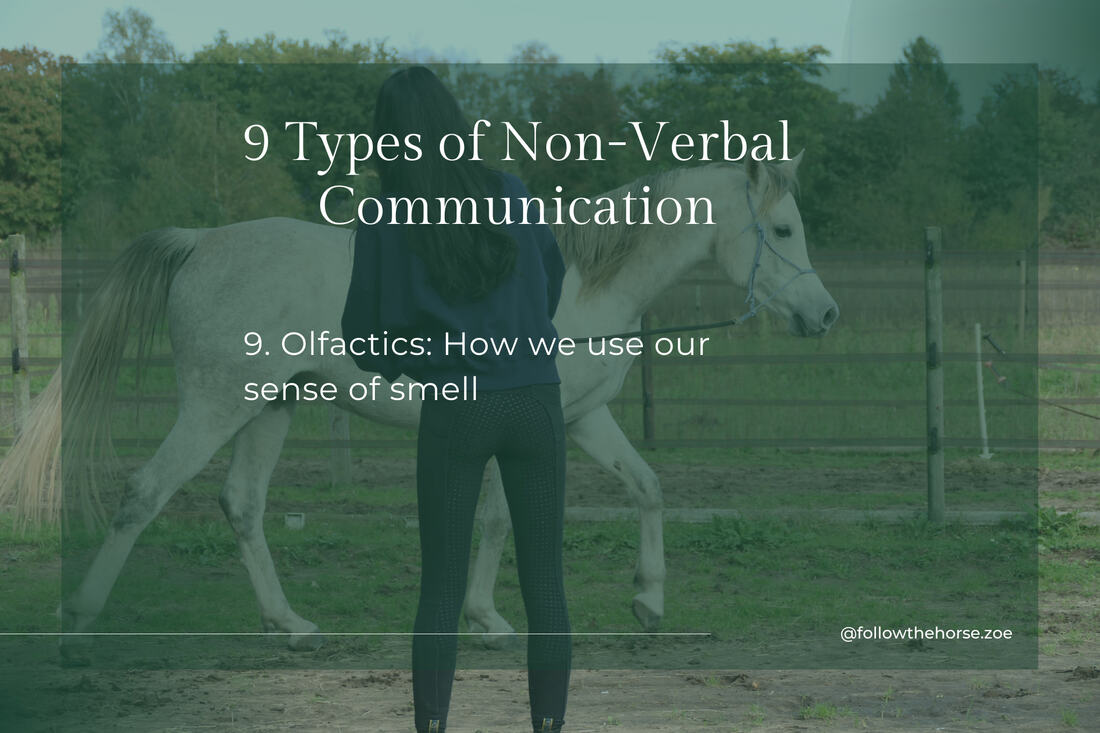
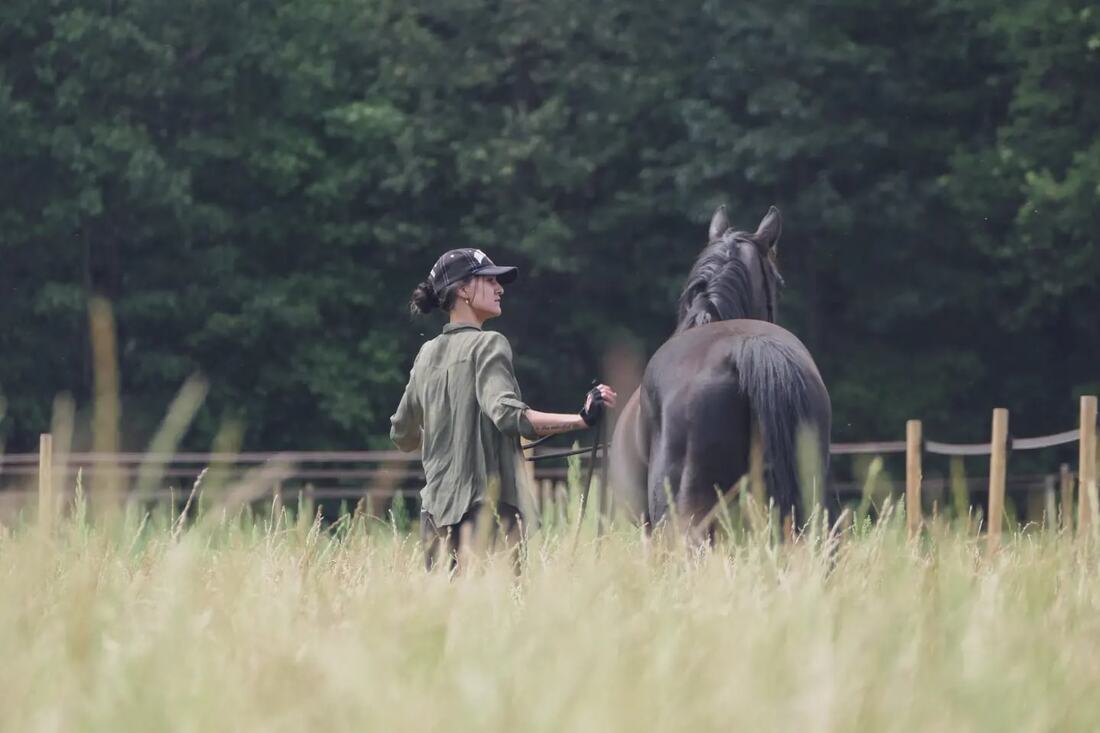
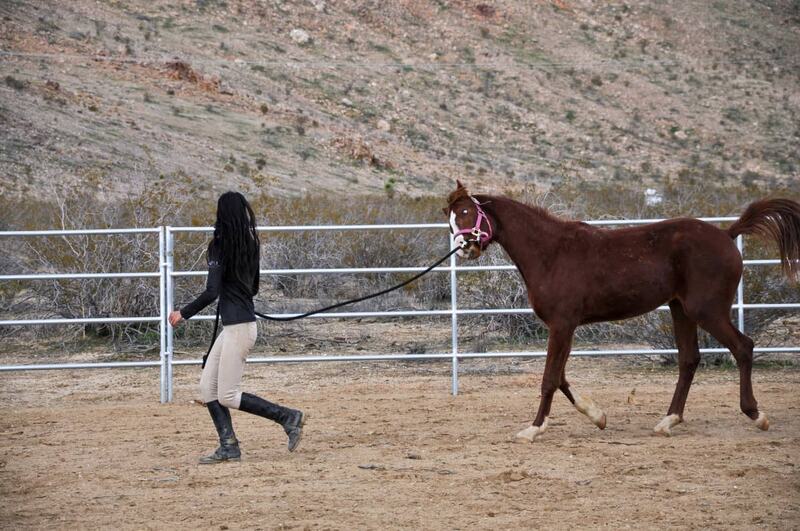
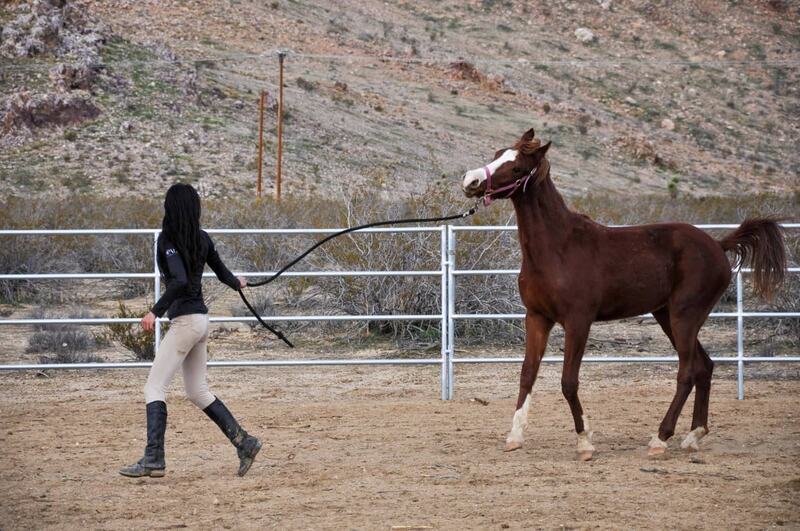

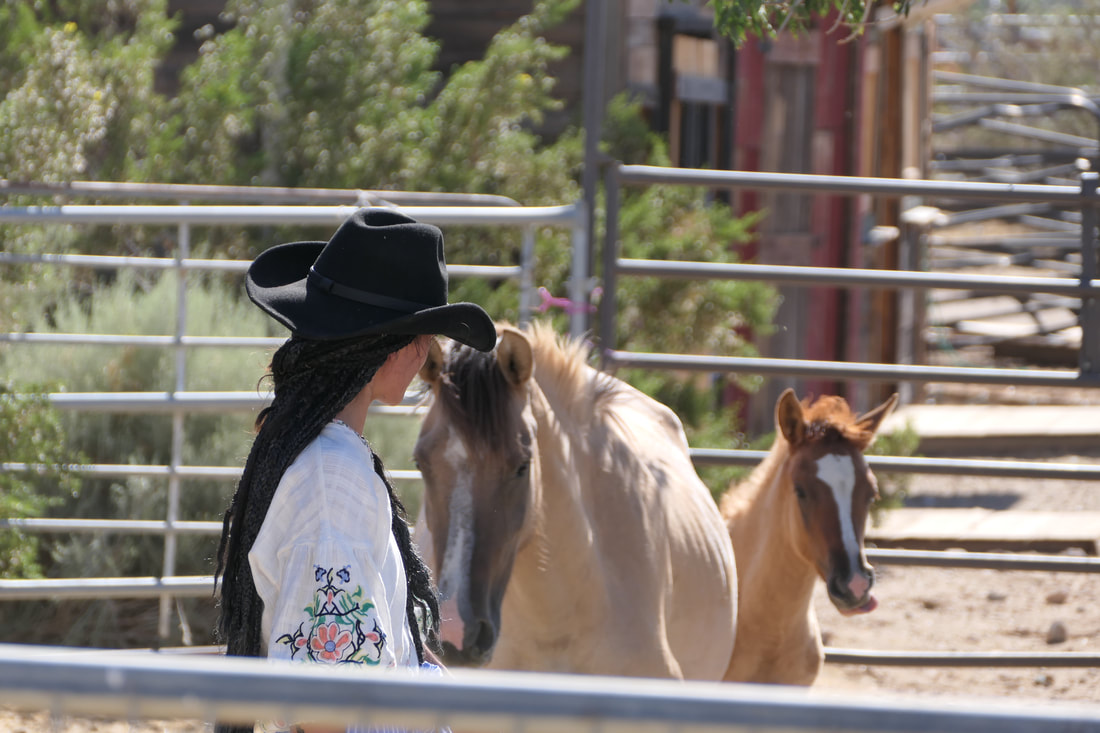
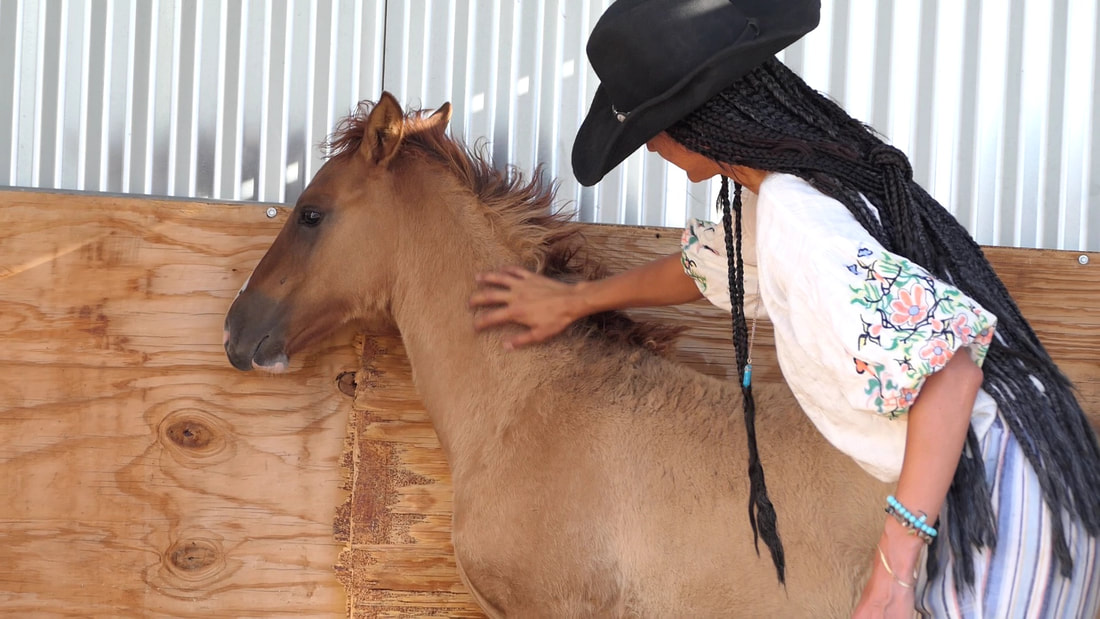
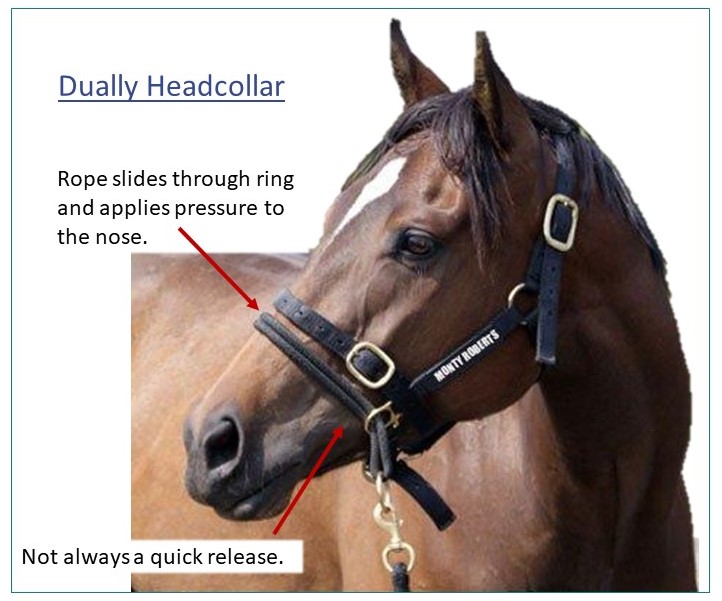
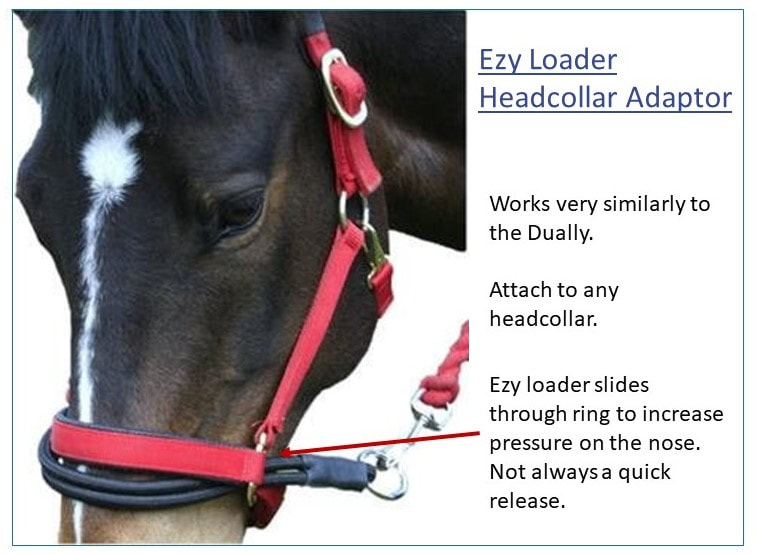
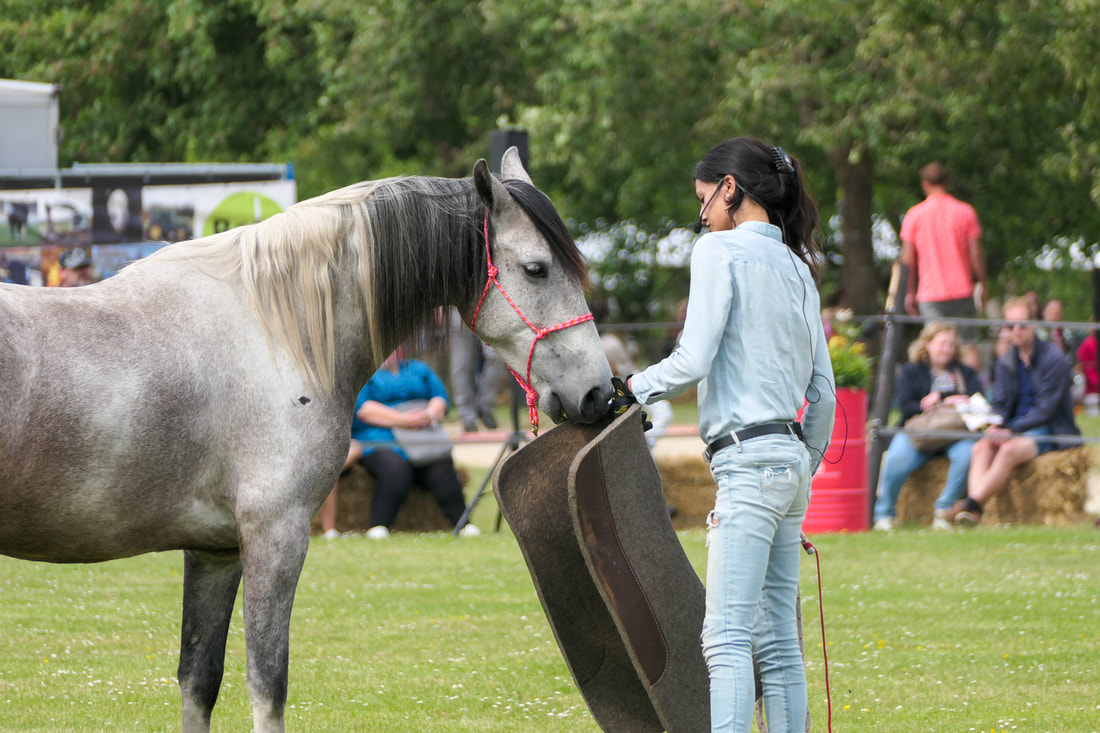
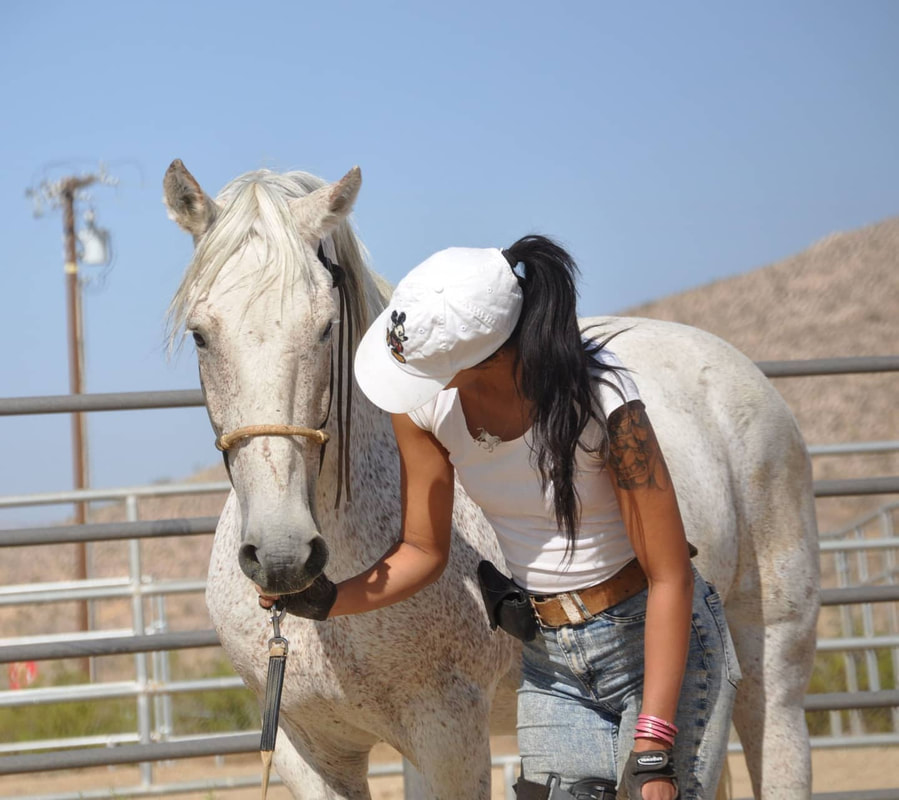
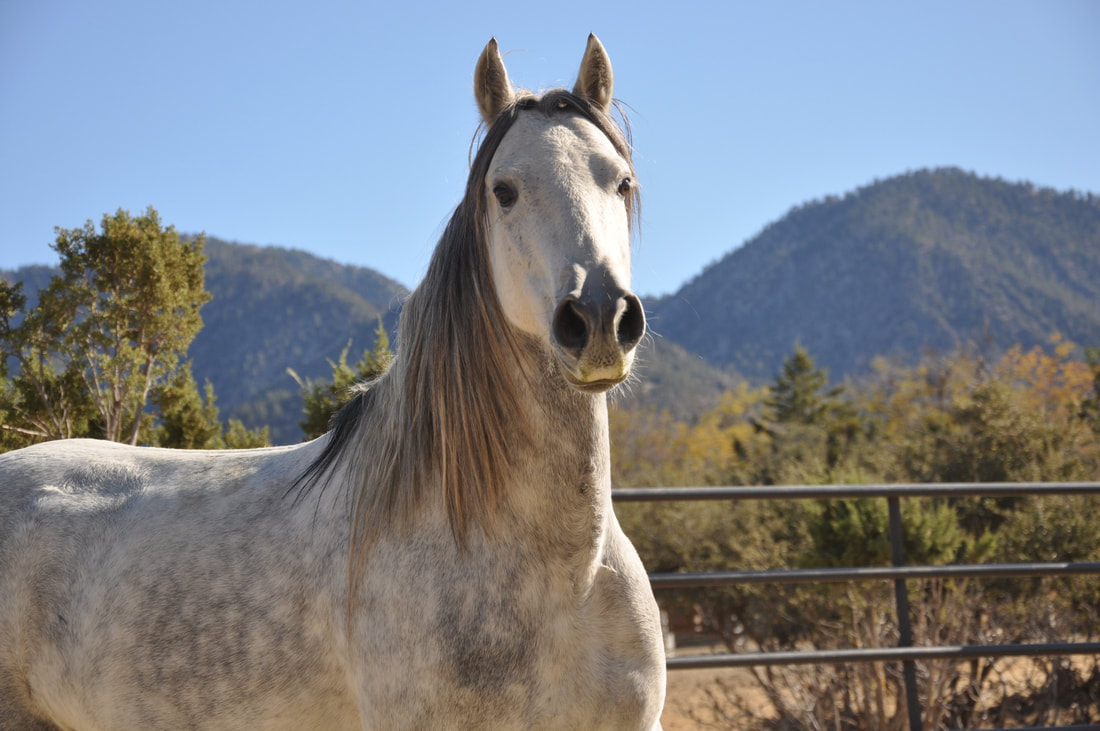
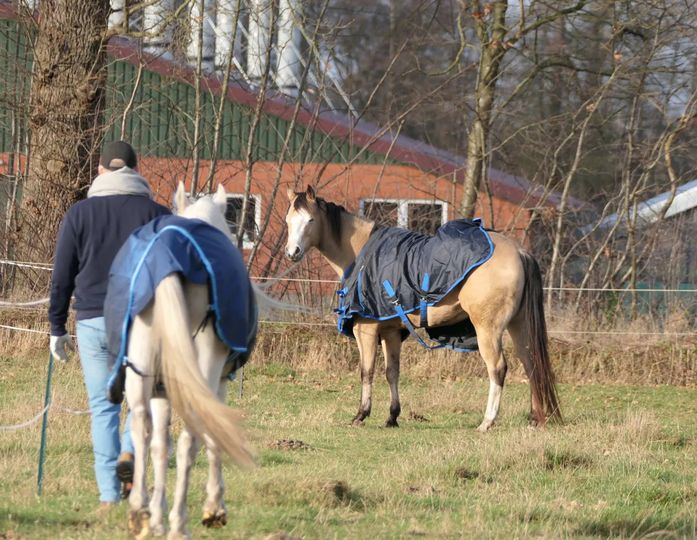
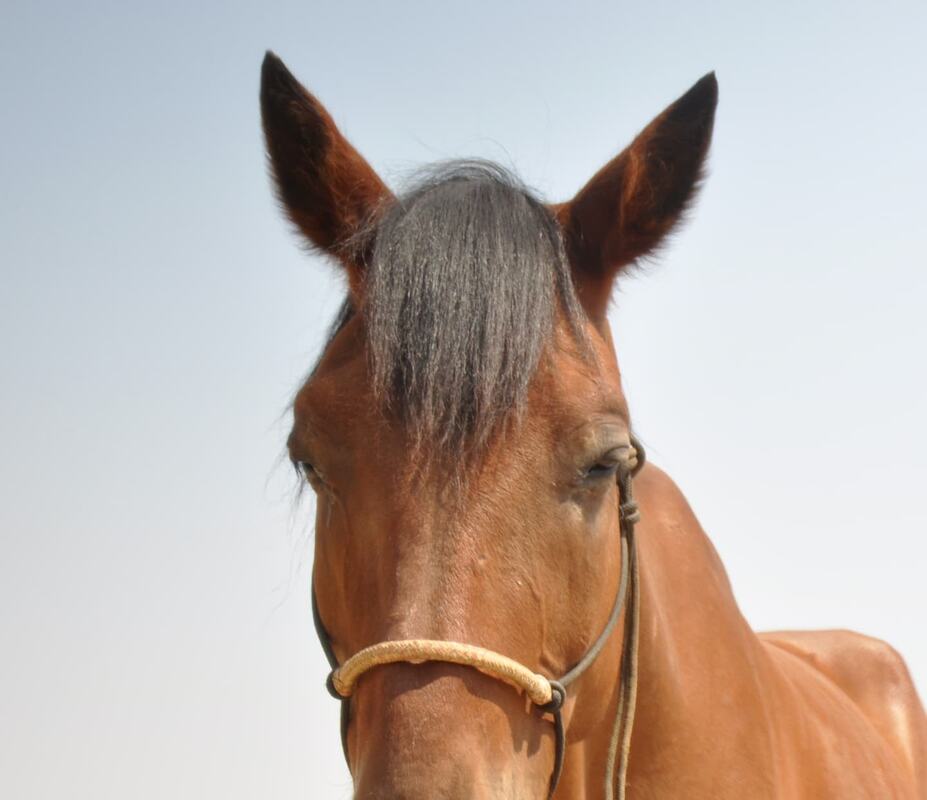
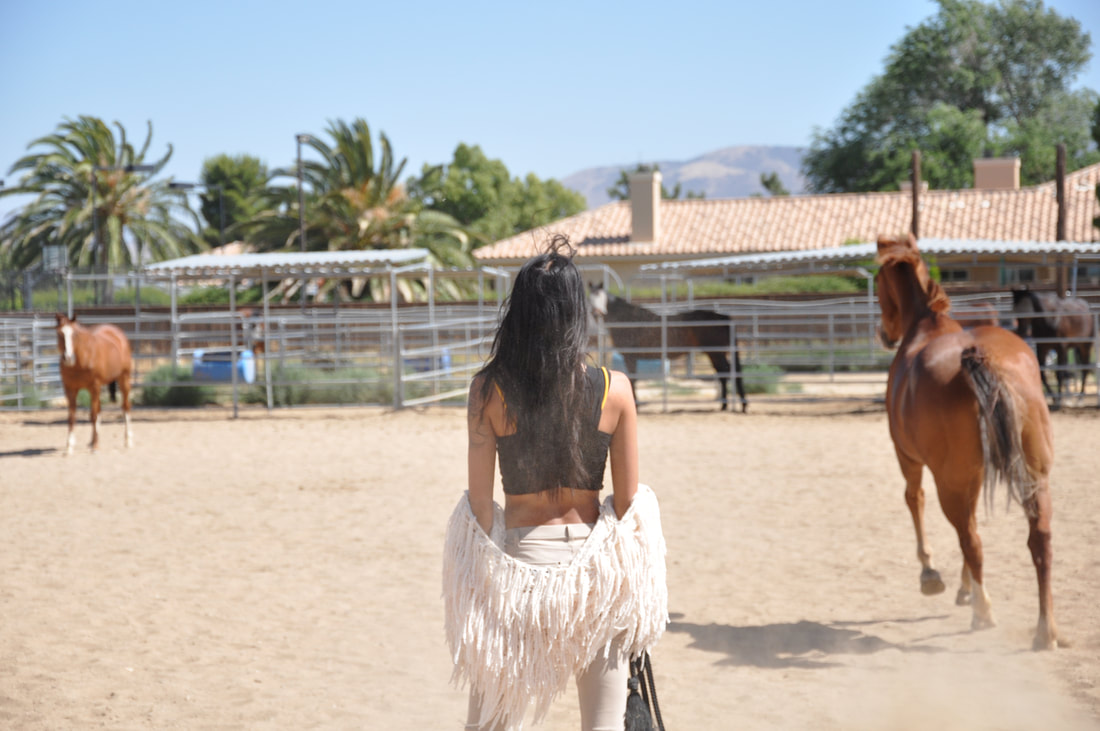
 RSS Feed
RSS Feed

